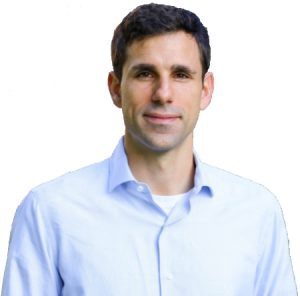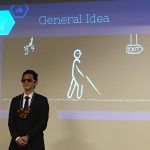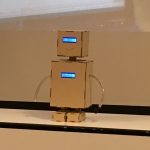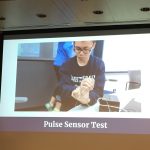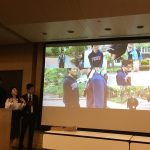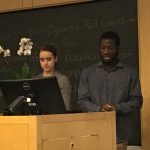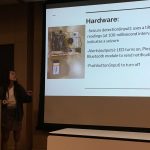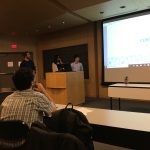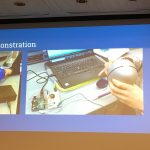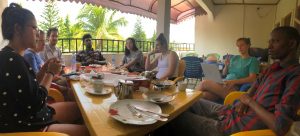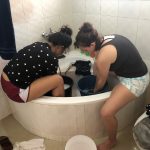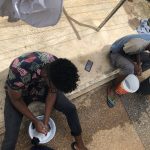by Sophie Burkholder
Innovations in Vascularization Could Lead to a New Future in Bioprinting
We may be one step closer to 3D-printing organs for transplants thanks to innovations in vascularization from researchers at Rice University and Washington University. Jordan Miller, Ph.D., a Penn Bioengineering alumnus, now an assistant professor of bioengineering at Rice, worked with his colleague Kelly Stevens, Ph.D., an assistant professor of the bioengineering department at Washington, to develop 3D-printed networks that mimicked the vascularized pathways for the transport of blood, lymph, and other fluids in the body. Their work appeared on a recent cover of Science, featuring a visual representation of the 3D-printed vessels in vasculature meant to mirror that of the human lung.
Relying heavily on open source 3D-printing, Miller and Stevens, along with collaborators from a handful of other institutions and start-ups, found ways to model dynamic vasculature systems similar to heart valves, airways systems, and bile ducts to keep 3D-printed tissue viable. The video below demonstrates the way the team successfully modeled vasculature in a small portion of the lung by designing a net-like structure around a sack of air. But Miller, a long-time supporter of open source printing and bioprinting, hopes that this is merely one step closer to what he sees as the ultimate goal of allowing for all organs to be bioprinted. Having that sort of power would reduce the complex issues that come with organ transplants, from organ availability to compatibility, and bring an end to a health issue that affects the over 100,000 people on the organ transplant waiting list.
A Combination of Protein Synthesis and Spectrometry Improve Cell Engineering
One goal of modern medicine is to create individualized therapeutics by figuring out a way to control cell function to perform specific tasks for the body without disrupting normal cell function. Balancing these two goals often proves to be one of the greatest difficulties of this endeavor in the lab, but researchers at Northwestern University found a way to combine the two functions at once in methods they’re calling cell-free protein synthesis and self-assembled monolayer desorption ionization (SAMDI) mass spectrometry. This innovation in the combination of the two methods accelerates the trial and error process that comes with engineering cells for a specific need, allowing researchers to cover a lot more ground in determining what works best in a smaller amount of time.
Leading the study are Milan Mrksich, Ph.D., a Henry Wade Rogers Professor of Biomedical Engineering at Northwestern, and Michael Jewett, Ph.D., a Charles Deering McCormick Professor of Teaching Excellence and co-director of the Center for Synthetic Biology at Northwestern. Together, they hope to continue to take advantage of the factory-like qualities of cell operations in order to use cells from any organisms to our advantage as needed. By helping to reduce the amount of time spent on trial and error, this study brings us one step closer to a world of efficient and individualized medicine.
Non-Invasive Sensory Stimulation as New Way of Treating Alzheimer’s
What if we could reduce the effects of Alzheimer’s disease with a non-invasive therapy comprised of only sensory inputs of light and sound? A recent study between Georgia Tech and MIT tries to make that possible. Alzheimer’s patients often have a larger than normal number of amyloid plaques in their brains, which is a naturally occurring protein that in excess can disrupt neurological function. The treatment — designed in part by Abigail Paulson, a graduate student in the lab of Annabelle Singer, Ph.D., assistant professor of Biomedical Engineering at Georgia Tech and Emory University — uses a combination of light and sound to induce gamma oscillations in brain waves of mice with high amounts of these amyloid plaques. Another lead author of the study is Anthony Martorell, a graduate student in the Tsai Lab at MIT, where Singer was a postdoctoral researcher.
This new approach is different from other non-invasive brain therapies for memory improvement, as tests demonstrated that it had the power to not only reach the visual cortex, but that it also had an effect on the memory centers in the hippocampus. An innovation like this could bring about a more widespread form of treatment for Alzheimer’s patients, as the lack of a need for surgery makes it far more accessible. Singer hopes to continue the project in the future by looking at how these sensory stimulations affect the brain throughout a variety of processes, and more importantly, if the therapy can be successfully applied to human patients.
NIH Grant Awarded to Marquette Biomedical Engineering Professor for Metal Artifact Reduction Techniques in CT Scans
Taly Gilat-Shmidt, Ph.D., an associate professor of biomedical engineering at Marquette University, recently received a $1.4 million grant from the National Institute of Health to improve methods for radiation treatment through metal artifact reduction techniques. When patients have some sort of metal that can’t be removed, such as an orthopaedic implant like a hip or knee replacement, it can interfere with the imaging process for CT scans and lead to inaccuracies by obscuring some tissue in the final images. These inaccuracies can lead to difficulty in devising treatment plans for patients who require radiation, as CT scans are often used to assess patients and determine which line of treatment is most appropriate. Gilat-Schmidt hopes to use the grant to implement tested algorithms to help reduce this variability in imaging that comes from metal implants.
People and Places
Activities for Community Education in Science (ACES), founded by Penn chemistry graduate students in 2014, aims to inspire interest and provide a positive outlook in STEM for kids and their families. The biannual event provides students grades 3–8 with an afternoon of demonstrations, experiments, and hands-on activities focused on physics and chemistry.
After an explosive opening demonstration, more than 70 students made their way between experiments in small groups, each participating in different experiments based on their age.
Read the rest of this story on Penn Today.
The Society of Women Engineers (SWE) is a non-profit organization serving as one of the world’s largest advocates for women in engineering and technology over the past six decades. With a mission to empower women to become the next leading engineers of the world, SWE is just one of many agents hoping to bring more diversity to the field. Our chapter of SWE at Penn focuses particularly on professional development, local educational outreach, and social activities across all general body members. In a new article from SWE Magazine, the organization collected social media responses from the public on the women engineers we should all know. With a diverse list of engineers from both the past and present, the article helps bring to light just how much even a handful of women contributed to the field of engineering already.

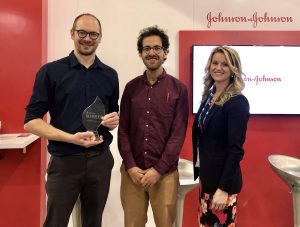


 Art, design, biology, and engineering all interact with each other in a
Art, design, biology, and engineering all interact with each other in a 
